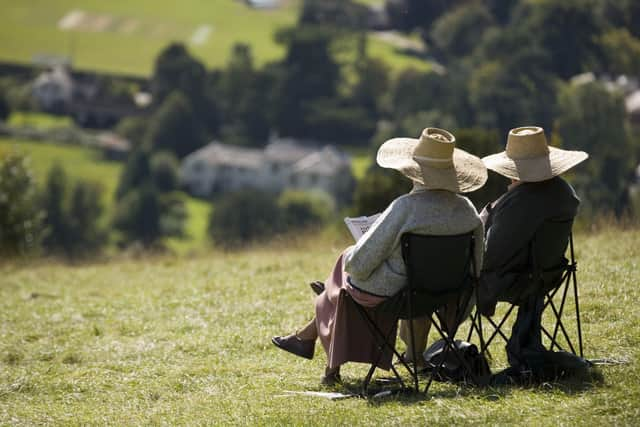How to use the government's OPSO scheme to buy a home in later life
Here’s what Richard has to say: If you haven’t come across it before, a home bought through a shared ownership scheme involves buying, via leasing, a share of the property and paying rent on the share retained by the landlord, which typically is either a housing association or other registered provider.
Generally, the scheme then allows you to buy further shares in the property over time while in turn reducing the amount of rent you pay on the part of the property you do not own.
Advertisement
Hide AdAdvertisement
Hide AdThis process is commonly known as “staircasing” and in most cases, there will be an option to purchase all of the remaining shares to give you full ownership.


However, looking to the older end of the market, the UK Government has introduced a varied form of the scheme called “Older Persons Shared Ownership”, which goes by the acronym OPSO.
Under OPSO, a share of between 25 per cent and 75 per cent of the open market value of the property can be bought, though in contrast to the standard scheme, the maximum share you can purchase under OPSO is 75 per cent.
This means there is no opportunity for full ownership of the property. However, if you do purchase at, or staircase to, 75 per cent of the ownership, there will be no rent to pay on the remaining 25 per cent.
Advertisement
Hide AdAdvertisement
Hide AdIn order to be eligible for the scheme, you must be aged over 55 and have an annual household income of £80,000 or less and you should be unable to purchase a home suitable for your needs without assistance.
You must also sell any existing property owned before buying through OPSO, though no local authority nomination will be needed. Another part of the criteria is that you cannot have any outstanding credit issues.
Given the higher level of living costs for many retirement living properties and, in some developments, home care provision, the guidelines suggest that there is no cap on the amount of savings/investments you can hold to cover these continuing living costs, though each case will be considered on its own merits.
The application scheme is administered through government-appointed regional Help to Buy agents who advise on eligibility and will have details of suitable properties in the relevant area, including those specifically designed for OPSO that have additional care and support services.
Advertisement
Hide AdAdvertisement
Hide AdThe Yorkshire region is served by Help to Buy Agent for the North Visit www.helptobuyagent1.org.uk/ for details.
Be aware that there are some different considerations which will apply if you are using OPSO or any other form of shared-ownership scheme for a purchase in the later stages of life.
The process for selling the property is not likely to be as swift as selling through an estate agent on the open market.
OPSO properties are likely to have a selling process involving the registered provider or the Help to Buy agent having the opportunity to nominate a purchaser, and that person being given a period of time to exchange contracts.
Advertisement
Hide AdAdvertisement
Hide AdIf this avenue is unsuccessful, you will be able to market the property yourself but a number of weeks will have passed by then.
Don’t forget that, although you will own a share of the property, you will nevertheless still assume full responsibility for the outgoings at the home, which may include not only your usual utilities but in retirement living developments will include the ongoing periodic maintenance and insurance charges so be sure to checkout the cost of these and the potential for increases.
If you are purchasing in later life, these considerations take on greater meaning because in the event of death or the need to move into nursing care, you, or on death, your estate, will retain responsibility for the outgoings of the property until it is sold.
This may be a consideration for the buyer and their next of kin who may be handling the sale. This is a worst-case scenario, and it is likely that the procedures for sale will be handled sensitivelyby the housing association or registered provider.
For more details visit www.ownyourhome.gov.uk/scheme/opso.